by Tom Gaylord
Writing as B.B. Pelletier
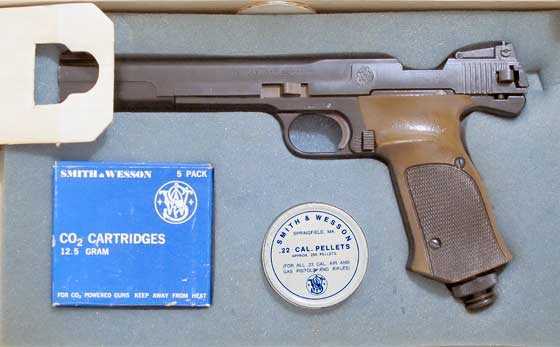
A very early S&W 78G air pistol. Though the picture looks matte because of lighting, this is one with glossy paint. It’s like new!
This report covers:
- First test — is the frame porous?
- The test
- Discussion 1
- Crosman Premiers
- Air Arms domes
- Discussion 2 — can this pistol even shoot?
- RWS Superdome
- Discussion 3
- Gamo Match
- Back to Superdomes
- Trigger
- Summary
Today I test the S&W 78G for accuracy. If you tuned in late, this particular pistol was made in the first year of production — 1971 — and is in pristine condition. The links to Parts 1 & 2 are at the top. If today’s report interests you, you might want to read the rest of it at some point.
First test — is the frame porous?
In Part 2 I mentioned that the pistol seemed to have leaked down after Part 1, so I conducted a test to see if the frame is porous. Many of the early S&W pistols had frames that were porous, and no amount of sealing would make them gas-tight. They leaked down very slowly, so it was a fault that was not easy to find. Smith & Wesson knew this and replaced the leakers as they came in for service.
I put a brand new CO2 cartridge in the pistol after finishing the Part 2 test. That was exactly a week before I conducted today’s test. When I took the pistol out of the box this morning and fired it, a puff of visible gas escaped the muzzle. That puff is condensation from liquid CO2 flowing through the valve and flashing to gas that compresses and condenses the air when it reaches the atmosphere. It happens on the first one or two shots after a new cartridge has been installed. So the cartridge was still full after a full week, meaning this gun does not have a porous frame.
The test
I shot from 10 meters with the gun rested on a sandbag. I used a 6-o’clock hold. There was no sight-in because I was using the open sights that came with the gun. I shot 5-shot groups because I wanted to shoot more pellets. That turned out to be a good decision, as you will see.
RWS Meisterkugeln
The first pellet tested was the .22-caliber RWS Meisterkugeln wadcutter. The first shot hit the white, just below the bull, so I knew the pistol was sighted to hit at the point of aim. Five pellets went into 1.416-inches at 10 meters. The group is horizontal.
Because the group hit below the bull, I adjusted the rear sight up and shot again at the same target. This time the pellets landed nicely in the black. Five pellets made a group that measures 1.644-inches between centers. The target you see below holds the two groups.
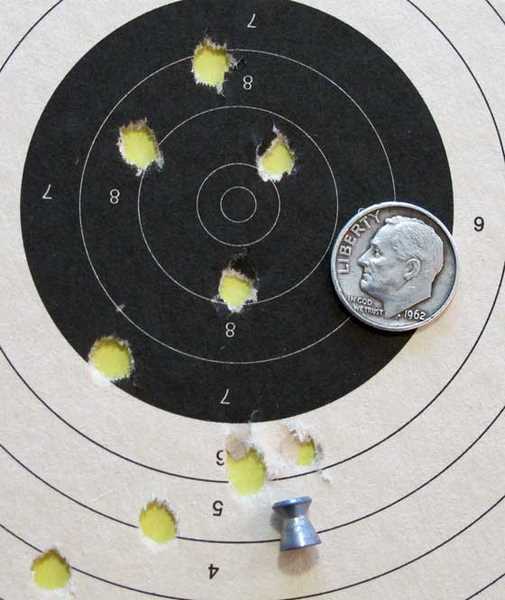
All holes are from Meisterkugeln wadcutters. The holes in the white are the first group. Two pellets went through the hole closest to the pellet. Bottom five are in 1.416-inches. Top 5 are in 1.644-inches. I am aware the target is upside-down.
Discussion 1
We know several things from this first target. First we know that the Meisterkugeln is probably not the best pellet for this pistol. At least we hope the pistol can do better than this!
Second we know that the sights do work. Adjustment did move the second group higher.
I didn’t mention it but I shot the first group while wearing my everyday glasses. The target was in sharp focus but the front sight was blurry. That is backwards so I put on my 1.25 diopter reading specs for the second target. Now the front sight was sharp and the target was blurry for the rest of the test. But the second group is larger than the first and that seems to go against what I have told you about seeing the front sight sharp. But just wait a bit.
Crosman Premiers
Next I tried some .22-caliber Crosman Premiers. Four of the five are in 1.294-inches but the fifth shot opened the group to 2.95-inches. I have no idea which of the 5 shots it was. And there was no called pull for this group. Premiers are out, too.
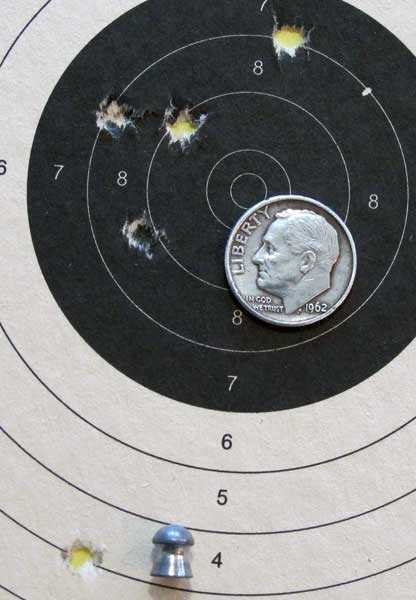
Four of five Premiers are in 1.294-inches, but that one stray at the bottom opened the group to 2.95-inches.
Air Arms domes
Next to be tried were five of the Air Arms domes that weigh 16 grains. I was hoping for a decent group from them, but I didn’t get it. Five pellets went into 2.576-inches at 10 meters.
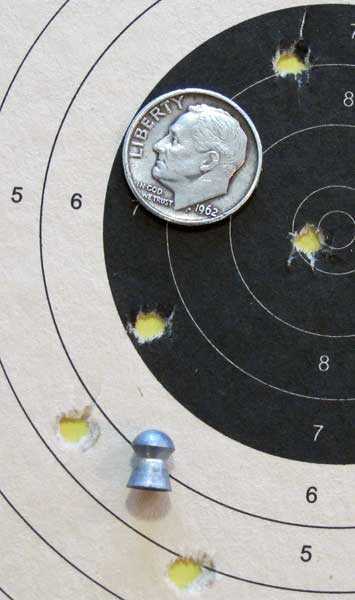
Five Air Arms domes went into this vertical 2.576-inch group at 10 meters.
Discussion 2 — can this pistol even shoot?
At this point in the test I was doubting everything — the airgun and even myself. This was not the report I thought it would be. Isn’t the 78G supposed to be a target pistol? Then, a single pellet turned things around.
RWS Superdome
I shot 5 RWS Superdomes at the target and didn’t look through the spotting scope — even after it was all over. I just walked down to the target trap to change targets for the next pellet. And that is when I saw it — a 0.787-inch group. Four of the pellets are in a tight 0.397-inches! Now THAT is a group! I can work with that!
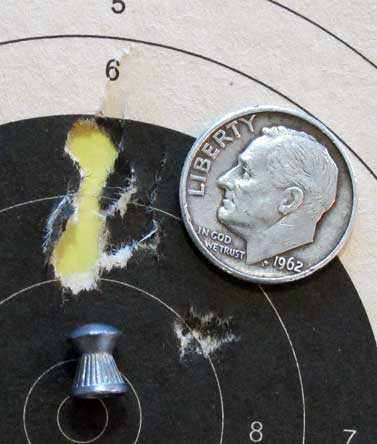
The S&W 78G put five RWS Superdome pellets in 0.787-inches at 10 meters, with four of them in 0.397-inches.
Discussion 3
Finally I shot a real group! After the test of the Sig Virtus I was starting to wonder whether I can still shoot. Incidentally, I have shipped the Virtus back to Sig for their examination. I am hoping they will tell me what they find after they examine it, and then ship the rifle back for me to test again. But there are so few examples in the US they may send it on to Tyler Patner for his review.
I wanted to shoot a second group of Superdomes to prove this one wasn’t a fluke, but there was one more pellet to test. So, let’s look at that one first.
Gamo Match
Several readers have asked if I ever tried Gamo Match pellets. I used to use them in a lot of tests, but I stopped at some point and my tins got buried in my cabinet. However I did some digging and found both calibers, so today I’ll test them in this .22 pistol.
Five Gamo Match pellets went into 2.451-inches at 10 meters. It’s not the worst group of the test, but it’s not the right pellet for this pistol. That doesn’t make it a bad pellet — just not one that’s suited to this pistol.
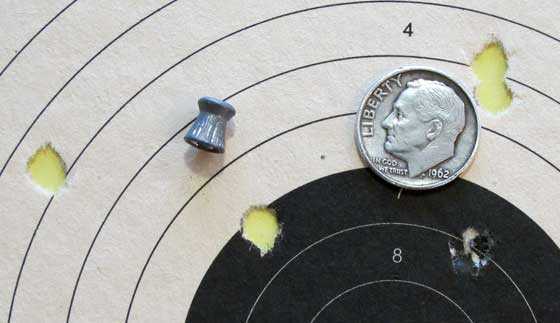
Five Gamo Match wadcutters went into 2.451-inches at 10 meters.
Back to Superdomes
Okay, this last target is a check on BB. Was the first Superdome group a fluke or does the 78G like this pellet a lot? I dropped the rear sight a little because the last Superdome group was at the top of the bull. And then I shot the second-best group of the day! Five Superdomes went into 1.067-inches between centers at 10 meters. It’s larger than the first group, but still not too bad! I did call the shot that’s highest and farthest to the right as a pull. I think Superdomes are what this pistol likes.
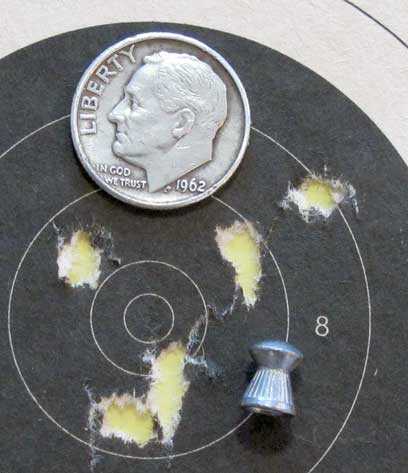
This second group of Superdomes measures 1.067-inches between centers.
Trigger
I will agree with reader Ian (45Bravo) that the 78G trigger is not as nice as the trigger on a Crosman Mark I or II. But while shooting it for this test I discovered how it works. The test pistol has a horribly creepy and heavy first stage pull that masks the second stage. Once I got used to it and could feel stage two, I started knowing when the trigger was about to break. That makes a big difference because when you can do that you can hold the sight picture that little bit better for the final pull. I don’t think it affected my groups that much, other than allowing me to clearly see one pull I called on the final target.
Summary
This series has been a great one because I had a window into the past. This unaltered S&W 78G performed for me just as it would have in 1971. The only difference is the pellets I used are better than what was available back then.
These old airguns are sometimes surprisingly good even today. I know many people think that can only be true of springers, but we have seen a couple CO2 guns like this one that are just as good.

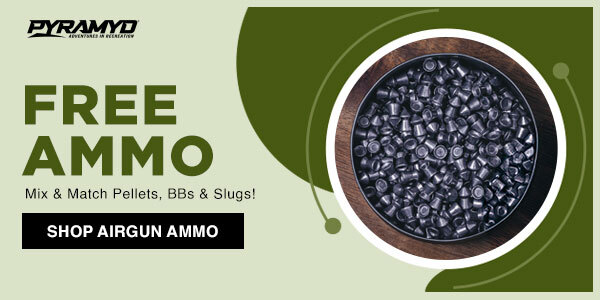
BB,
Hooray for the old gal! Now that would be a CO2 pistol worth having. I do like the looks of it.
I am curious. I do not recall you mentioning it, but are there original S&W CO2 cartridges and pellets in the containers?
RR,
Yes to both questions.
B.B.
B.B.,
Would have appreciated a picture of the expected pellets for this pistol, even though they would probably be hardened by age and with a patina of white lead oxide.
Siraniko
Siraniko,
I will add them to the comments later today.
B.B.
B.B..
Just a small update to the 78G/79G saga: I recently got a Daisy 790, the Daisy version of the 79G, from a customer for reseal. The gun was basically a S&W 79G with the upper frame merely stamped with the Daisy markings, all the parts in the gun were S&W ones. It must have been one of the guns Daisy assembled from the S&W parts pile they got when the tools and stock were purchased from S&W. It is the only one I have seen and was definitely made before Daisy changed the frame casting was modified and all the markings except the serial number were made part of the casting. Must be a pretty scarce example, I wonder how many are out there. I’d like to add one to my small collection.
Stay well,
George
There is a seller on the American airgun classifieds selling NEW OLD STOCK .177 S&W pellets by the tin or by the roll. I have bought from him in the past. And they are reasonably priced.
The unused Co2 cartridges are another story, rarer than hen’s teeth is an understatement.
What was the term they used in a movie?
Unobtanium?
There is a listing on gunbroker now for a box of 5 unused S&W cartridges for $215, buy now price..
There are enthusiast out there selling quality reproductions of the manuals online, for owners to add to their collectible pistol that is missing the manual.
Now someone needs to make a hydrodip mask for the cartridges…
Anyone out there talented in hydrodipping or silk screening?
Here is an untapped market.
Ian
Ian,
I’ll just take the unobtainium, thank you very much.
BB,
I can most definitely see where that would enhance the value of that pistol with you. It might even sway me to hang on to the box. 😉
Everyone,
I get emails to guest blogger all the time. Unless they are requesting to write a guest blog, I ignore them. This blog is where the questions should be asked. I just received the following question that really applies to the writer of the guest blog on converting a Crosman CO2 pistol.
—————————————————
Dear Mr. Gaylord.
I purchased a Crosman 2240 a few months ago with the intention of doing some minor upgrades to it. I found that after purchasing a 14.6 inch barrel, steel breach, slightly stronger hammer spring and a power adjuster and installing them on the pistol I was getting velocities very close to the ones you wrote about in your review of the Crosman 2400KT CO2 with the same length barrel. While I was working on my pistol I recorded velocities after each part I replaced. For instance, after installing the longer barrel I saw a 36 f.p.s. increase. The stronger hammer spring and power adjuster turned to max increased velocity by 12 f.p.s. The greatest increase came after installing the steel breach. This increased velocity by an astonishing 48 f.p.s ! With these four simple improvements it increased velocity by 96 FPS. With a room temperature of 77 degrees during all chronograph testing. After reading your review of the Crosman 2400KT from the Crosman custom shop I decided to order two of their guns. One with a 24 inch barrel and one with a 18 inch barrel. Assuming I could add the same power adjuster and stronger hammer spring to these too would give me an additional increase of another 90 f.p.s you specified came with the power valve already installed in these custom guns. Since the custom guns already come with steel breaches; I should gain over 90 f.p.s over my lightly modded 2240 due to the longer barrels. When the two guns arrived I installed the stronger hammer springs and same power adjusters on both guns and proceeded to do chronograph testing. I was astonished to see that 2400kt with the 18 inch barrel was 15 fps LESS than my my 2240 ! The 2400kt with the 24 inch barrel was only 9 fps faster than the 2240. —. All of this makes me think either the custom shop didn’t install the power valve on my guns or the power valve doesn’t exist. I even took the stinger hammer springs and power adjusters out of all the guns and retested them with the same result. Can you or a fellow blogger shed some light on this ? Thanks Russell.
——————————————
Cab someone please address this?
Thanks,
B.B.
BB,
We need Hiveseeker!!!!! Here is my contribution, but it looks like Russel is already pretty well up to speed on mods.
/blog/2018/03/crosman-2400kt-co2-air-rifle-part-14/
A quick search with (2240) reveals that you did quite a bit with the platform as well.
Chris
Russell and BB
I don’t have an answer, but I also am interested in the answer. A friend and I both recently purchased 24″ 22 caliber custom shop guns. I do have a couple questions though.
Did you shoot it much to see if the guns needed a break in before tearing them down and changing things over?
Did you chronograph the new guns before the mods and after to see what changes were made to the velocity?
And last, is there any chance that different pellets were used in the testing the different guns?
CB
BB,
If you read down to part 2 of this report, this addresses some of the valve issues. From what Hiveseeker said,… if you ordered the 18 or 24″ barrel models, you should get the Crosman power valve,.. which I think is what Russell was expecting. Not an answer,… but more info..
/blog/2018/02/crosman-2400kt-co2-air-rifle-part-13/
Chris
(since I have the old blog dug up, I will post a reply to Hiveseeker alerting him to a question on the current blog. Maybe he will see it in his E-mail)
Russel,
I have a few questions.
Was the temperature the same during ALL the velocity testing? You pointed out that the temp was 77 F during the tests for the first modded gun, but it’s not clear to me that that means it was 77 F when testing the Custom Shop guns. A low temp will cause a lower velocity. According to Steve Archer, it is about 2 fps/1 degree F difference.
Additional questions that I’d have are – have you put the longer barrels on the gun that you first modified? There could be some issues of fit up causing leaks in the CS guns that offset the gains from the power valve. Is the porting in the CS receivers (diameter, alignment with the barrel, etc) the same as in your first gun’s replacement receiver? Is the transfer port seal present and undeformed in the CS guns? Is your CO2 cartridge being pierced completely? Have you thought of putting the power valve from one of the CS guns into your first gun? If it gives you a bump in speed or at least produces a lot of visible wasted gas from the 14.6 ” barrel in that gun, it could prove that it is an actual “power valve” and that other issues are at work holding back performance in the CS guns. I think some good inspection and a little more part swapping could help explain why you haven’t gotten the increased velocity that you were expecting.
Half
Russel,
Normally installing a steel breech has little effect on the velocity unless you have a leak in your original plastic breech.
In general longer barrels give significant increases in velocity in CO2 guns. More efficient valves and stronger hammer springs will give better results with the longer barrels.
Your modifications each add to an increase in velocity but they are not additive. The order you install them will give a different change in velocity for each modification. You should end up at the same velocity when all the mods are installed.
You did not provide a set of your measured velocities. A list of 10 velocities for each mod would help. That tells how uniform the velocities were. A spread of 10 to 30 fps is typical, and as stated by Captain Bravo different pellets give different velocities. Also the average velocities will give other readers the ability to compare your results to theirs.
The results you presented are in the ballpark of what I would expect, except for the increase from the steel breech. Maybe others have different experiences.
You have a good question on the power valve. The only way to figure that out is to swap valves and record the differences in the valves and their velocities. A weaker valve spring can increase velocity. I don’t know the actual difference between the standard valve and the power valves from Crosman. Hiveseaker may be able to answer your questions better.
Don
B.B.,
I think 9 fps from 14.5 to 24 is probably about right. A less than hoped for increase with the 24 inch barrel is probably at least in part be due to the law of diminished returns with barrel length. I would expect doubling the barrel length to 14.5 inches from 7.5 inches would provide roughly the same velocity improvement that lengthening the barrel from 14.5 inches to 24 would add.
Everything else being equal 18 inches is probably the length Crosman sells that would get the most velocity out of a given CO2 powerplant, more than a 24 inch barrel or perhaps about the same.
Therefore to me at least, the biggest mystery is what is wrong with the air pistol with the 18 inch barrel. A reduction in velocity means something must be different/not as good in the powerplant of the additional pistol, in the bore of the barrel, or both.
Michael
B.B.,
Having just reread the reader’s question, was the increase to 24 inches that produced “only” 9 more fps. from 7.5 inches or from 14.5 inches? An increase of 9 fps. with a barrel change from 7.5 inches to 24 inches is moderatly surprising to me, but again, from 14.5 to 24 would improve velocity by 9 or so fps, I would expect.
Michael
I don’t recall exactly how the comment notifications work, so I’m responding here as well–see my comments about Russell’s 2400KT questions below . . .
BB,
Glad you got to run this classic through it’s paces. Proving that it functions surely adds value to your pristine kit.
On the porous frame issue,… you stated that yours is an earlier model. So that means that at some point after initial production,.. they switched to a different casting method/casting material make up? Then, after problems showed up,.. they went back to the original method/formula? Or, do you know?
Chris
Chris,
The early castings were the bad ones. Not all were, only some. So this pistol is a lucky one.
B.B.
I can happily report gun number 2814 didn’t leak either. A couple of years ago I lucked into a set similar to BB’s, though not nearly as nice. I didn’t know about the early casting issue with I bought it, all excited to get a low number gun. *whew*, turns out this guns is fine. As I recall, I wasn’t enamored with its barrel’s performance either. I wound up getting an extended, choked barrel, and with that, this gun really shined!
NTOIG,
Do you think maybe a lot of the porous frames have been weeded out by now?
B.B.
It really wouldn’t be surprising to me if they were. To not have been found early on, the buyers would have had to either never shot the gun, or not cared that it leaked down relatively quickly. The latter being unlikely, I guess the guns to watch are the “immediately collected safe queens”.
This is really a treat,
You just don’t see complete sets in this condition come up for sale very often.
It is really great to see this pistol still able to do its job like new.
As usual, you just had to find the right pellet.
Do you have any more test planned for this pistol?
I wonder how it would do with the factory pellets?
I also wonder who S&W contracted to make their pellets for them in the 70’s.
I can not see them investing the money in the machines for that, especially since they stopped including the co2 and pellets in their later kits.
Ian
Ian,
I guess I will have to try it with factory pellets. Too much interest. Oh well… 😉
B.B.
“So the cartridge was still full after a full week, meaning this gun does not have a porous frame.”
B.B., that’s great! And it’s good to see you were able to wring some accuracy from it with Superdomes. =>
Print out a copy of this blog and put it in the box with the manual, for future owners to have as a reference.
Including what pellet was best.
Just a thought..
Ian,
I probably should.
B.B.
Everyone,
I promised Siraniko I would show a picture of the pellets in the comments, so here you are.
B.B.
They look different than the Crosman ash can pellets. Do they have a shorter skirt? Otherwise they look the same.
In regards to Russell’s post on the 2240 versus the CS guns fps differences my opinion is that as stated before the 18″ barrel should give best results overall in general. There are a lot of variables that Russell does not provide to give an educated response. But I can say from my experience that you will only continue to gain fps if the amount of CO2 released per shot is progressively more for each added length of barrel so that the CO2 is still continuing to expand while the pellet is still in the barrel for the barrel length available. Temps play a big part in the picture as well.
So it seems that in his 2240 build the 14,5 inch barrel is likely close to the optimal length for his mods, My first change would be to switch barrels on the 2240 to the 18″ and then the 24″ and record the gains for comparison. Then go to the valves next but only change one thing at a time so you can track what does and does not make a difference for the positive.
I have no clue if there is or what the difference between a 2240 valve and a CS power valve is but there should be obvious visual differences in springs, valve throat/seat sizes, exhaust port sizes/angles, stem diameters/ lengths ETC
I am not a CO2 guy at all but they are based on the same principles as a PCP other than CO2 pressure being more temp sensitive than HPA. You can only gain fps as long a there is still energy in the compressed gas being used that can exert a force on the projectile before it leaves the barrel.
BD
I don’t have much to compare this to, but it seems to me that for a ‘match’ pistol the accuracy is not quite as good as a Daisy 717, or a Hy Score 816. Were they in a comparable category, when new?
One other question; would it make any difference (in the accuracy department) if this pistol happened to be a .177?
All of that being said, I wish that I would find one of these (or a Crosman Mk) at a garage sale. I will keep looking.
BB – keep up the best blog (and probably one of the most enviable jobs) in the airgun world!
Bill
Bill,
I don’t think the 78G or 79G were ever in the Daisy 717 or Diana 5 category. They were good for American air pistols, but not that good.
And I do love my job! 😉
B.B.
My original 78G purchased in 1977 still holds gas and shoots well. The best pellet is the old Crosman superpells. I still have a couple hundred, cleaned and oiled to prevent the oxidation. Have not found another that is quite as consistent. Probably next best is JSB Exact Heavy.
It has been too long! I’ve continued to scan the blog though haven’t commented in a while, and I’m glad to see that the Golden Age of Airguns continues to get brighter every day. I’ve had too many other projects, too little time, and too little gun closet space left to keep up. Thanks to Chris USA for commenting on one of my previous blogs so that I would be aware of this comment.
Anyway, the simplest explanation to Russell’s question is that he got what I call “target” (standard) valves rather than power valves in his two Custom Shop guns. Since writing my blogs, I’ve come across multiple reports of buyers receiving a power valve when ordering a 2400KT with a Lothar Walther barrel, so I suppose the opposite can happen–a standard valve being installed with a long-barreled CS gun. These are both the opposite of my experience (I’ve bought five 2400KTs now), but since Crosman does not specify what you are getting it’s certainly possible. My wish continues to be that the fine folk at Crosman add a “Valve” option to their 2400KT Custom Shop page so customers can choose exactly what they want. One way for Russell to check this is to purchase a power valve from a third-party vendor and see if that makes a difference.
One really odd thing in Russell’s comments is that he saw a significant velocity increase when he installed the steel breech. While this is a great upgrade that provides strength and improved scope/sight mounting options, it should not affect velocity. I don’t believe I’ve seen any other claims of velocity increase with a steel breech in my extensive reading on 2240 mods. It’s possible that the original 2240 breech was not installed correctly and CO2 was leaking somewhere, and this was fixed when the steel breech was installed.
Also, Russell lists velocity increases, BUT if he would provide the stock velocities of his two 2400KTs with no mods that would probably tell right off the bat whether he got power valves or not–the difference would be about 90 fps lower than what I report when I tested different barrel lengths on a 2400KT with a power valve (/blog/2017/12/crosman-2400kt-co2-air-rifle-part-10/). However, I do note that he is testing at about 10 degrees F lower so the difference might be even larger.
My final comment on this general subject is that having done more shooting during cooler weather (I’m talking 70s, so yes that’s quite relative!) I have found the velocity drop to be much faster than other data I’ve come across suggesting a drop of around 2 fps per degree (but that testing was done on a different CO2 rifle, not a Crosman). So, my own testing at 84-88 degrees F has probably resulted in higher velocities than many shooters in cooler climates will experience. Just be aware as you compare your own guns and mods to mine.
Chris USA, thanks again for the heads-up!
Hiveseeker,
No problem. Just glad to see that you are still kickin’. 😉
Thanks for sharing your knowledge on the question. I do not think we ever did hear from Russell. I hope all of that discussion was not wasted.
Chris